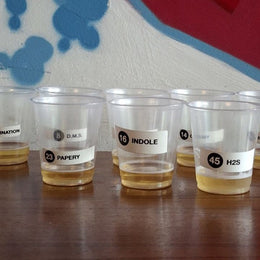Editor: This is a 2-part feature on how Japan saved the US bourbon industry. Do check out Part 1 here.
|
John is a cocktail and spirits enthusiast born and raised in Manila. His interest started with single malts in 2012, before he moved into rum and mezcal in search of malterntaitves – and a passion for travel then helped build his drinks collection. Article first published on Malt Review UK here. |

Today, I’m continuing my discussion of how Japan saved bourbon in the 1980s. But, instead of talking about how things unfolded, I’m going to talk about some brands.
I’m starting off from 1975, when Chuck Cowdery, in this ABV Network podcast, mentioned bourbon started to get a lot of love in Japan. This was thanks to someone who handled international business for Schenley. Despite being a bottom shelf item in America, I.W. Harper (which was being made in the Bernheim Distillery) started the bourbon boom there.
To do business in Japan, one must have a Japanese company as a partner. Schenley’s partner was Suntory for brands like I.W. Harper, J.W. Dant, and Ancient Age. Suntory also had a deal with Brown-Forman for their brands Jack Daniels, Old Forester, and Early Times.
Chuck mentions that I.W. Harper was such a hit that a gray market for it was formed. Folks would buy bottles in the US then ship them directly to Japan at a profit. Of course, Schenley and Suntory weren’t too happy about this, but it wasn’t really illegal; it was merely frowned upon.
From what I know, the I.W. Harper brand has been owned by Diageo since 2015, although no one is sure where the bourbon currently comes from. Some say it’s still coming from Bernheim. But, aside from Diageo selling the distillery to Heaven Hill in 1999 (and maybe, cask transactions) I’ve never heard of Diageo having dealings with Heaven Hill. So, this is unlikely. The other guess is it’s Four Roses bourbon, which makes more sense with Bulleit Bourbon having been made by Four Roses before.
Having bought this bottle years ago, I’m not sure of this expression’s status. My paying less attention to American Whiskey hasn’t allowed me to be sure whether this product has been discontinued or today’s bourbon boom just causes this to fly off the shelves in Japan. The website indicates that there’s now a NAS and a 15 year old in the American market.
We all know that Blanton’s has been in really high demand. But, for some reason, not a lot of people know that Sazerac’s Buffalo Trace distillery only makes Blanton’s bourbon. The brand is actually owned by a Japanese company called Age International. What’s even less known is that Blanton’s was created in 1984 for the Japanese market by two former Fleschmann’s Distillery executives. They acquired the Buffalo Trace Distillery, which was still called the George Stagg Distillery, and the Ancient Age brand from Schenley. Age International was formed through this, which means Age International was initially American-owned.
Their partner in Japan was Takara Shuzo. In the early 90s, Takara Shuzo bought the distillery but immediately flipped it to Sazerac while retaining the rights to Blanton’s and the other brands that use the same mash bill. Age International’s current office is said to be just a few blocks away from the Buffalo Trace Distillery.
Another brand that became popular in Japan was A.H. Hirsch. Bourbon fans who have been around since the early 2000s will be more aware of this due to Chuck Cowdery’s book on it called The Best Bourbon You Will Never Taste. (Chuck, if you ever read this, I did. It’s still one of the most memorable drinks I’ve ever had.) The bourbon was simply old and unwanted stock from the original Michter’s Distillery in Pennsylvania.
The last brand I’ll talk about is Four Roses. A lot of us will know that it used to be owned by Seagrams. Seagram’s partner in Japan was Kirin. With Seagrams diluting the flavor via adding neutral spirits, the brand didn’t do well in the US. But for some reason, it did well in Japan. (I’m guessing they were good for highballs.) Chuck mentions that Four Roses did so badly in the US at one point that Seagrams took it out of the US market. Jim Rutledge eventually convinced them to make it available in Kentucky at a limited capacity so that the employees could buy it.
There we go. Knowing more about the history of some brands shed more light on why some bourbons are only available in Japan and why companies like Beam and Four Roses are now Japanese-owned.
I.W. Harper Aged 12 Years – Review
43% ABV. USD $40 – 50 in Japan.

Color: Chimay Blue.
On the nose: The ethanol bite is strong and peppery. After that, I get light and short aromas of honey, toffee and Fuji apples. Subtle to medium aromas of sour plums, green apples, pentel pen marker and muscovado sugar syrup.
In the mouth: A lot of dry confectionary taste. The heat isn’t much of an issue here. It adds a slight peppery sensation. I get light to medium tastes of popcorn kernels, honey, cinnamon syrup, toffee and coconut sugar syrup. In-between are subtle and very short tastes of sour plums and pentel pen markers.
Conclusions:
This is inoffensive and not exciting. Let’s just say this is an OK bourbon. But, this doesn’t taste like any bourbon sold today. It lacks the aggressive flavors of the usual vanilla, cinnamon, leather and sweet corn.
As someone who likes pre-60s and 60s style of bourbon where the distillate is more balanced with the wood, I can appreciate this. But this may be not for bourbon drinkers who are after the enticing sweetness of today’s bourbon.







